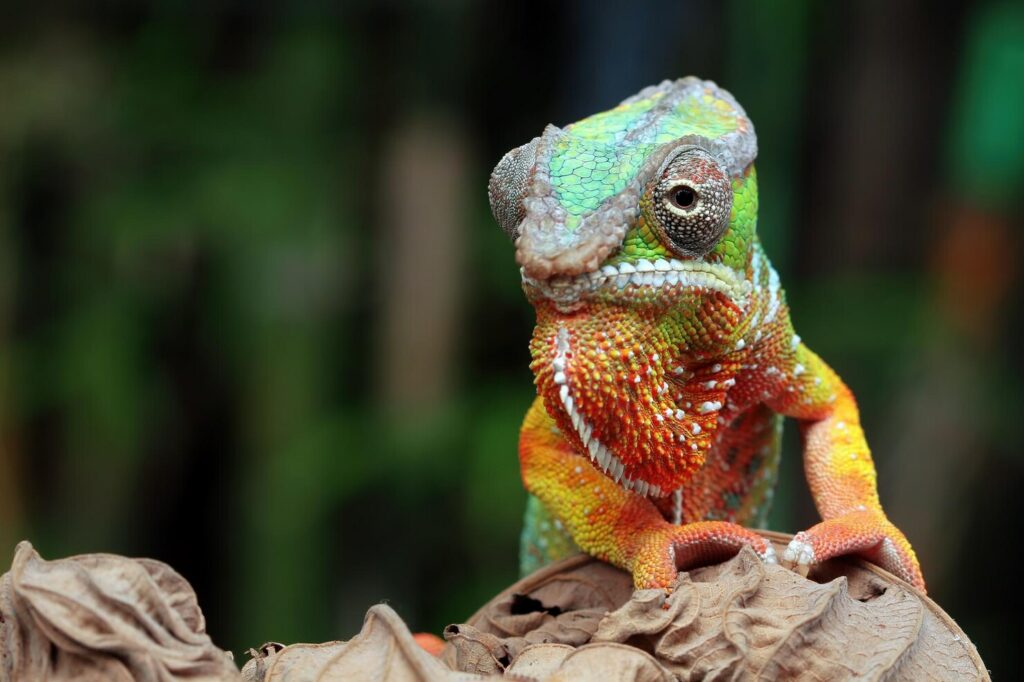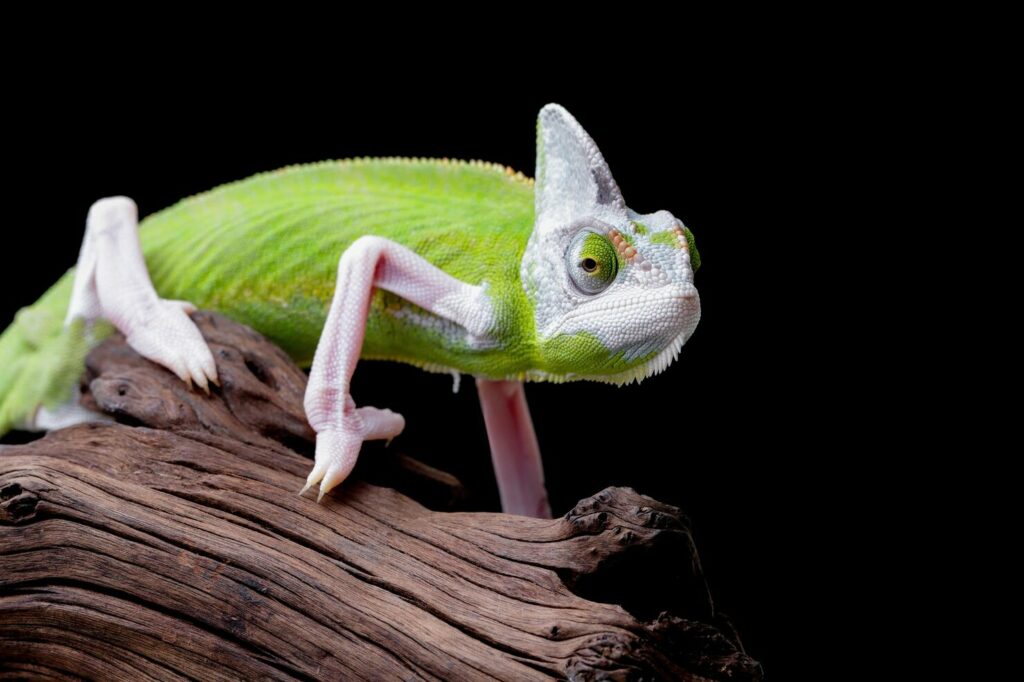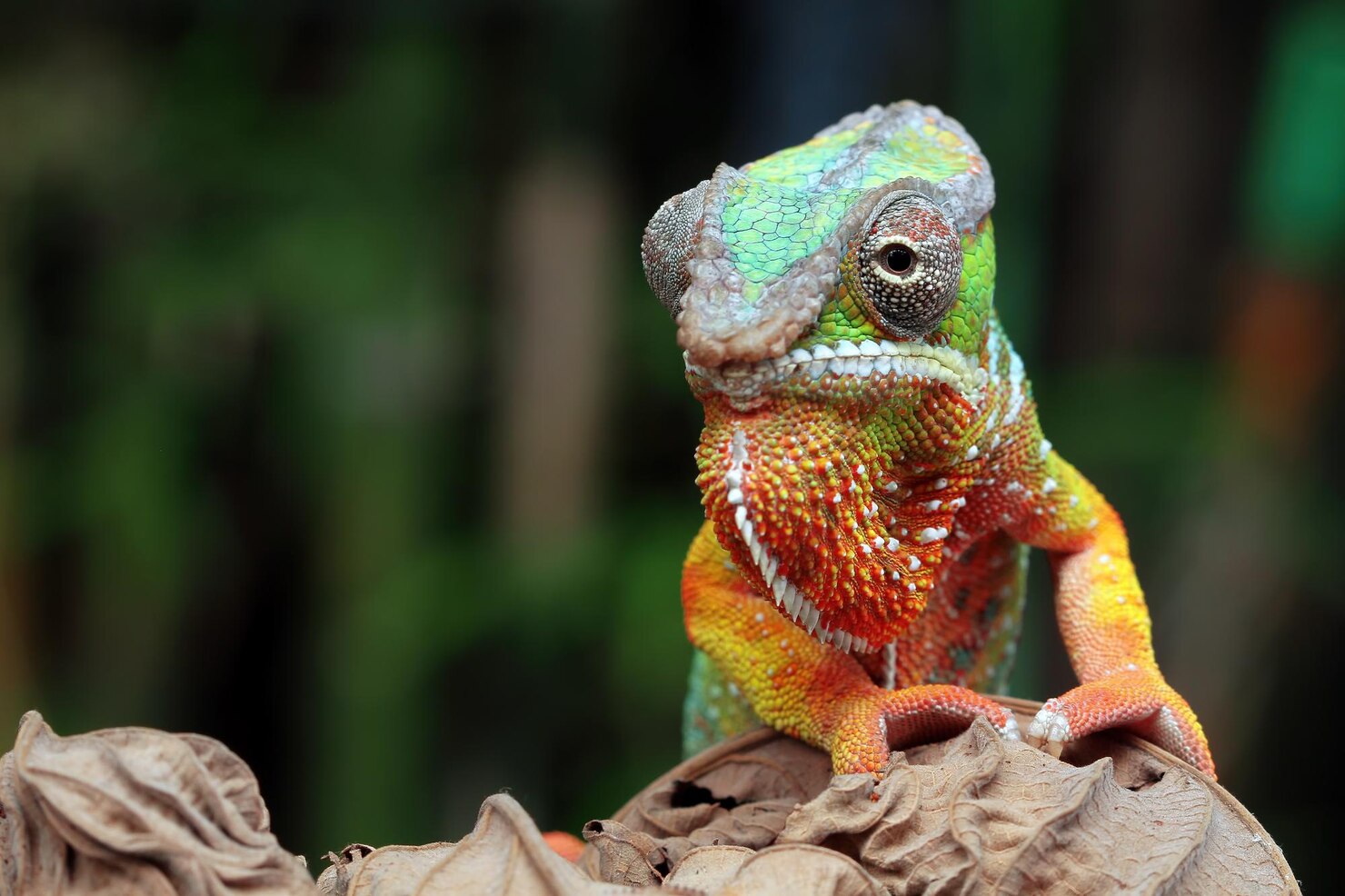Chameleons, with their captivating appearance and intriguing behaviors, have gained popularity as exotic pets in recent years. However, owning a chameleon is not for everyone, as these reptiles have specific needs and characteristics that must be considered. In this article, we will explore the pros and cons of keeping chameleons as pets to help potential owners make an informed decision about whether these unique creatures are the right fit for them.
You may also want to know how chameleons change color.
The Pros of Keeping Chameleons as Pets
1. Fascinating and Unique Behavior:
- Chameleons are renowned for their extraordinary color-changing abilities and their independent eye movement, providing endless fascination for owners who enjoy observing their pets’ behavior.
2. Low Noise Levels:
- Chameleons are quiet animals, making them suitable for apartment living or homes where noise-sensitive individuals reside.

3. Low Allergenicity:
- Unlike furry pets, chameleons do not shed dander, making them a good option for people with allergies to pet hair or other allergens.
4. Compact Size:
- Chameleons are relatively small reptiles, and their enclosures don’t take up as much space as larger pets like dogs or cats.
5. Low Odor:
- Chameleons have a minimal scent compared to some other pets, which can be a relief for owners sensitive to strong animal odors.
6. Educational Experience:
- Keeping chameleons as pets can provide an educational opportunity for owners and their families to learn about reptiles, their behavior, and the ecosystems they come from.
The Cons of Keeping Chameleons as Pets
1. Specialized Care Requirements:
- Chameleons have unique and specific care needs that can be challenging for inexperienced reptile keepers. These needs include habitat, temperature, humidity, and lighting requirements that must be met to ensure the chameleon’s health and well-being.
2. Expensive Initial Setup:
- Setting up a proper chameleon enclosure can be costly. Expenses include a spacious and well-ventilated habitat, specialized lighting (UVB and basking), heat sources, humidity control, and a variety of live insects for feeding.
3. Ongoing Costs:
- Maintaining a chameleon as a pet entails recurring expenses, such as purchasing live insects, replacing UVB bulbs, and ensuring proper nutrition. Veterinary care, if needed, can also be expensive.
4. Limited Interaction:
- Chameleons are not social animals like dogs or cats. They prefer to be left alone and can become stressed or aggressive when handled. This limited interaction can disappoint pet owners seeking a more interactive companion.
5. Fragile Health:
- Chameleons are delicate creatures prone to stress-related health issues. Even minor disturbances or incorrect care can lead to severe health problems. Finding a veterinarian experienced in chameleon care can be challenging in some areas.
6. Lifespan:
- Chameleons have relatively short lifespans compared to some other pets. Depending on the species and care provided, they can live anywhere from 5 to 15 years or more. Owners should be prepared for the commitment and potential loss of their pet.

Popular Chameleon Species as Pets
Before diving into the pros and cons of chameleons as pets, it’s essential to know that not all chameleon species are suitable for beginners. Some of the more commonly kept species include:
1. Panther Chameleon (Furcifer pardalis):
- Panther chameleons are known for their vibrant colors and striking appearance. They are one of the more popular choices for chameleon enthusiasts.
2. Veiled Chameleon (Chamaeleo calyptratus):
- Veiled chameleons are hardy and relatively easy to care for, making them a suitable choice for beginners.
3. Jackson’s Chameleon (Trioceros jacksonii):
- Jackson’s chameleons are known for their three distinctive horns. They are a smaller species and are often considered a good option for novice keepers.
Pros of Specific Chameleon Species as Pets
1. Unique Appearance:
- Chameleon species like the Panther Chameleon and Veiled Chameleon are prized for their vibrant colors and distinctive markings, making them visually stunning pets.
2. Moderate Size:
- Many chameleon species are of manageable size, which means they can be comfortably housed in enclosures suitable for home environments.
3. Availability:
- Some chameleon species are readily available from reputable breeders, making it easier to find healthy, captive-bred individuals.
Cons of Specific Chameleon Species as Pets
1. Cost:
- The initial setup for chameleon enclosures, particularly for more colorful and sought-after species, can be expensive.
2. Specialized Care:
- Even within the realm of chameleons, different species may have unique care requirements. Prospective owners must research the specific needs of their chosen species.
3. Lifespan:
- Chameleons, including specific species, have relatively short lifespans compared to some other pets. Potential owners should consider the commitment involved.
Tips for Prospective Chameleon Owners
If you are considering chameleons as pets, it’s essential to be well-informed and prepared for the responsibilities that come with their care. Here are some tips for prospective chameleon owners:
1. Research Extensively:
- Thoroughly research chameleon care, including the specific needs of the species you plan to keep. Knowledge is key to providing proper care.
2. Budget Appropriately:
- Be prepared for the financial commitment associated with setting up and maintaining a chameleon enclosure. Budget for ongoing expenses, including food, lighting, and potential veterinary care.
3. Choose the Right Species:
- Consider your experience level and the time you can dedicate to chameleon care when selecting a species. Seek advice from experienced chameleon keepers or breeders.
4. Provide Proper Enclosure:
- Invest in a spacious and well-ventilated enclosure that meets the specific requirements of your chameleon species.
5. Address Health Concerns Promptly:
- Be vigilant about monitoring your chameleon’s health and seek veterinary care from professionals experienced in reptile care if any issues arise.
6. Respect Their Behavior:
- Understand that chameleons are not social animals and may become stressed or agitated when handled. Limit interaction to necessary tasks, such as enclosure cleaning or health checks.
7. Commit to Lifelong Learning:
- Stay informed about the latest developments in chameleon care and husbandry. Continue learning and adapting your care practices as needed.
Conclusion
Chameleons as pets offer a unique and rewarding experience for individuals who are passionate about reptiles and are willing to meet their specific needs. However, owning a chameleon also comes with significant responsibilities, including providing a suitable habitat, meeting dietary requirements, and understanding their behaviors and preferences.
Prospective chameleon owners should carefully weigh the pros and cons, do thorough research, and be prepared to invest both time and resources into creating a healthy and comfortable environment for these remarkable reptiles. When well-cared-for, chameleons can thrive in captivity and provide a fascinating glimpse into the world of reptile behavior and adaptation.


